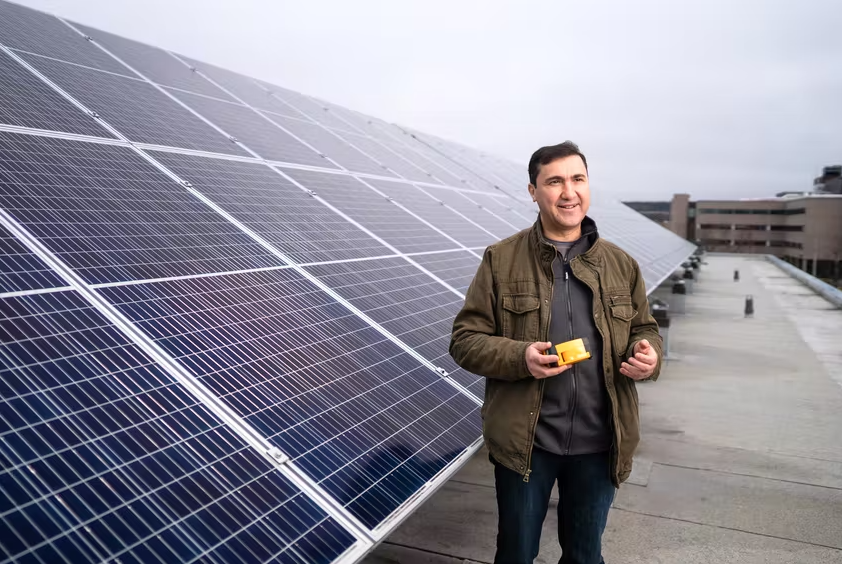Dr. Adel Merabet
Lowering electricity costs and decreasing CO2 emissions is something Dr. Adel Merabet aims to achieve through his work in renewable energy integration at Saint Mary’s University.
Merabet leads the Laboratory of Control Systems and Mechatronics, a research laboratory centred on engineering and technology.
“My lab works on developing control and management systems for renewable energy integration and efficient usage of battery storage to increase their operational capacity and productivity,” says Merabet.
For an industry project in Yarmouth, Merabet has developed machinery software and hardware to increase efficiency; he has also worked on automated machinery that regulates temperature systems in large-scale manufacturing equipment for Halifax-based Reused Plastic.
“These projects provide technology transfer to local industries and provides hands-on experience to my students, something that will be helpful for their future careers,” says Merabet.
In February 2021, the province of Nova Scotia set a goal of using 80% clean energy by 2030 as part of its Environmental Goals and Climate Change Reduction Act. Merabet’s research focuses on finding alternatives to traditional energy sources, including renewable sources and battery storage tech.
As Nova Scotia’s population grows, so too does its electricity demand. This is why he says building a big, pricey power plant is not the solution. “We need to look at small microgrids and develop technology to exchange between them, to generate power in city centres like Halifax.”
Microgrids are self-sufficient, harnessing solar and wind energy to produce electricity to create and localize energy that can be used by nearby buildings. Many use batteries for energy storage, allowing electricity to be used during power outages.
And while renewable sources like solar and wind depend on variable amounts of sunlight or wind, the way they are stored, and how that battery storage works, is vital. Part of Merabet’s research includes finding more efficient battery solutions for the transfer of renewable energy.
Merabet says that by using more efficient methods of battery storage in combination with renewable energy, diesel fuel consumption can be reduced, electricity costs will be lower, and CO2 emissions will decrease, benefiting our pocketbooks and the environment.
“With better battery storage combined with microgrids, we can use that source of energy over a long period of time,” says Merabet. “This will especially benefit remote and rural communities, so they don’t have to rely on diesel generators.”
For more information on the great research taking place at Saint Mary’s University, visit news.smu.ca/research.

